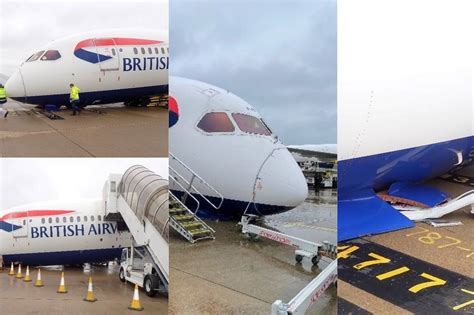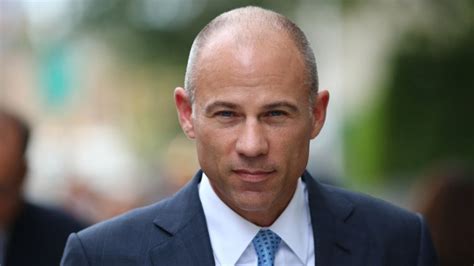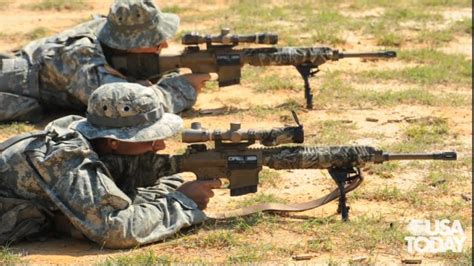
Boeing’s 787 Dreamliner is facing renewed scrutiny after four emergency landings in a single month, raising concerns reminiscent of the issues that plagued the 737 MAX following two fatal crashes. A whistleblower’s prior claims about safety oversights during the plane’s assembly are now fueling further apprehension about the aircraft’s structural integrity and quality control.
The recent incidents, though varying in cause, have collectively drawn attention to potential systemic problems within Boeing’s manufacturing processes. Each emergency landing has triggered investigations by aviation authorities, including the Federal Aviation Administration (FAA), which is already under pressure to enhance its oversight of the aircraft manufacturer. The convergence of these events and the resurgence of whistleblower allegations have intensified the spotlight on Boeing’s commitment to safety.
One of the most alarming aspects of this situation is the echo of past safety failures at Boeing, particularly those related to the 737 MAX. Following two crashes in 2018 and 2019 that claimed 346 lives, the 737 MAX was grounded worldwide for nearly two years. The investigations into those crashes revealed critical flaws in the plane’s design and significant lapses in Boeing’s safety culture, leading to calls for extensive reforms within the company and greater regulatory oversight.
The current concerns surrounding the 787 Dreamliner raise questions about whether Boeing has fully addressed the systemic issues that contributed to the 737 MAX crisis. The whistleblower’s claims, specifically, point to alleged shortcuts and inadequate quality control during the 787’s assembly, suggesting that similar problems may persist despite Boeing’s assurances of improved safety measures.
According to the Yahoo News report, “The recent emergency landings involving Boeing 787 Dreamliners have sparked fresh concerns about the safety and quality control processes at the aerospace giant.” This statement encapsulates the growing apprehension among passengers, aviation experts, and regulators. The sequence of incidents has eroded confidence in the 787, which was once lauded as a technologically advanced and fuel-efficient aircraft.
The whistleblower, a former Boeing employee, has reportedly provided detailed accounts of alleged safety violations and substandard manufacturing practices. These claims include allegations that critical components of the 787 were improperly installed or inspected, potentially compromising the plane’s structural integrity. While Boeing has denied these allegations, the FAA is taking them seriously and conducting its own investigation.
The four emergency landings that occurred within a month involved different issues but collectively paint a concerning picture. One incident involved an engine malfunction, another a problem with the landing gear, a third a suspected electrical issue, and the fourth a loss of cabin pressure. While it is not uncommon for aircraft to experience occasional technical problems, the frequency of these incidents involving the 787 has raised red flags.
Aviation experts have emphasized that each of these incidents needs to be thoroughly investigated to determine the root cause and whether they are isolated issues or indicative of a broader systemic problem. The FAA’s role in this process is crucial, as it is responsible for ensuring that Boeing adheres to the highest safety standards. The agency’s credibility has been questioned in the wake of the 737 MAX crisis, and its handling of the 787 situation will be closely scrutinized.
The economic implications of these safety concerns are also significant. Boeing’s stock price has been volatile in recent years, and further safety issues could negatively impact the company’s financial performance. Airlines that operate the 787 may also face increased costs associated with inspections, repairs, and potential groundings. The overall impact on the aviation industry could be substantial, particularly if the FAA orders widespread inspections or modifications to the 787 fleet.
Boeing has issued statements reiterating its commitment to safety and its confidence in the 787 Dreamliner. The company maintains that the aircraft is safe to fly and that it is working closely with the FAA to address any concerns. However, these assurances have done little to quell the growing unease among passengers and industry observers.
The situation is further complicated by the ongoing global pandemic, which has already had a devastating impact on the aviation industry. Airlines have been forced to cut routes, ground aircraft, and lay off employees due to the sharp decline in passenger demand. The added pressure of safety concerns surrounding the 787 could further exacerbate the industry’s woes.
In response to the recent incidents, some airlines have reportedly increased their maintenance checks on the 787 and are providing additional training to their flight crews. These measures are intended to mitigate any potential risks and reassure passengers that the aircraft is safe to fly. However, they also highlight the growing level of concern within the industry.
The long-term consequences of the 787 safety concerns remain uncertain. If the FAA determines that there are systemic problems with the aircraft, it could order Boeing to make significant design changes or manufacturing process improvements. This could be a costly and time-consuming process, potentially delaying deliveries of new 787s and impacting the airline’s operations.
The situation also underscores the importance of whistleblowers in the aviation industry. Whistleblowers often play a critical role in exposing safety violations and holding companies accountable for their actions. In the case of the 787, the whistleblower’s claims have provided valuable insights into potential problems with the aircraft’s assembly and quality control.
Moving forward, it is essential that the FAA conduct a thorough and independent investigation into the 787 safety concerns. The agency must also be willing to take decisive action if it finds evidence of systemic problems. The safety of passengers and the integrity of the aviation industry depend on it.
Boeing, on its part, must demonstrate a genuine commitment to addressing the safety concerns surrounding the 787. This includes being transparent with regulators, airlines, and the public about any potential problems with the aircraft and taking proactive steps to mitigate any risks. The company’s reputation and long-term success depend on restoring confidence in its products.
The 787 Dreamliner was once seen as a symbol of innovation and progress in the aviation industry. Its advanced technology and fuel efficiency made it a popular choice for airlines around the world. However, the recent safety concerns have tarnished its image and raised serious questions about Boeing’s commitment to safety. It remains to be seen whether the company can restore confidence in the 787 and ensure its long-term viability.
The unfolding situation necessitates a comprehensive and transparent approach from all stakeholders. The FAA must exercise its regulatory authority effectively, Boeing must demonstrate accountability and a commitment to safety, and airlines must prioritize the safety of their passengers. The future of the 787 Dreamliner, and indeed the entire aviation industry, hinges on it.
The report from Yahoo News also highlights the growing concern among aviation experts about the potential for future incidents. Some experts have warned that the combination of aging aircraft, increased air traffic, and potential safety lapses could lead to a greater risk of accidents. They argue that it is essential for regulators and airlines to remain vigilant and proactive in addressing safety concerns.
The FAA has already taken some steps to enhance its oversight of Boeing, including increasing its inspections of the company’s manufacturing facilities and requiring Boeing to implement new safety procedures. However, some critics argue that these measures are not enough and that the FAA needs to be more assertive in holding Boeing accountable for its actions.
The situation also raises questions about the relationship between Boeing and the FAA. Some critics have accused the FAA of being too close to Boeing and of not being independent enough in its oversight of the company. They argue that the FAA needs to be more willing to challenge Boeing and to hold the company accountable for its safety failures.
The long-term implications of the 787 safety concerns are difficult to predict. If the FAA determines that there are significant problems with the aircraft, it could order Boeing to make costly repairs or modifications. This could have a significant impact on Boeing’s financial performance and could also lead to delays in the delivery of new aircraft.
The situation could also have a negative impact on the airline industry as a whole. If passengers lose confidence in the 787, they may be less likely to fly on it. This could lead to a decline in demand for air travel and could put pressure on airlines to lower their fares.
Ultimately, the safety of passengers must be the top priority. The FAA, Boeing, and airlines must work together to address the safety concerns surrounding the 787 and to ensure that the aircraft is safe to fly. The future of the aviation industry depends on it.
The whistleblower mentioned in the Yahoo News article allegedly raised concerns about the shimming process during the assembly of the 787. Shimming is a critical part of aircraft manufacturing, involving the insertion of thin pieces of material between parts to ensure proper fit and alignment. Improper shimming can lead to stress concentrations and potential structural weaknesses. The whistleblower claimed that pressure to speed up production led to shortcuts in the shimming process, potentially compromising the aircraft’s structural integrity.
Another key area of concern raised by the whistleblower involves the drilling of holes in the 787’s composite fuselage. The Dreamliner’s fuselage is made of carbon fiber reinforced polymer, a lightweight material that offers significant fuel efficiency advantages. However, drilling into composite materials requires precise techniques to avoid delamination and other damage. The whistleblower alleged that improper drilling techniques were used during the 787’s assembly, potentially weakening the fuselage.
The allegations surrounding the shimming and drilling processes are particularly troubling because they relate to the fundamental structural integrity of the aircraft. If these processes were indeed compromised, it could lead to a greater risk of fatigue cracking and other structural failures over time. The FAA’s investigation will need to focus on these specific allegations to determine whether they are substantiated and whether they pose a significant safety risk.
The economic consequences of a potential grounding of the 787 fleet would be substantial. Airlines around the world rely on the Dreamliner for long-haul routes, and a grounding would disrupt their operations and impact their profitability. Boeing would also face significant financial losses from repairs, modifications, and potential compensation claims.
Beyond the immediate economic impact, a 787 grounding could also damage Boeing’s reputation and erode confidence in its products. The company has already faced significant reputational damage from the 737 MAX crisis, and another major safety issue could further undermine its credibility.
The 787 Dreamliner entered service in 2011 and quickly became a popular choice for airlines due to its fuel efficiency, passenger comfort, and long-range capabilities. The aircraft’s innovative features, such as its composite fuselage and advanced engine technology, made it a game-changer in the aviation industry.
However, the 787 has also faced its share of challenges. In 2013, the aircraft was temporarily grounded due to concerns about its lithium-ion batteries, which had overheated and caused fires. Boeing redesigned the battery system, and the 787 was eventually cleared to fly again.
The current safety concerns surrounding the 787 are different from the battery issues of 2013. The whistleblower’s allegations relate to the aircraft’s manufacturing processes and structural integrity, which are more fundamental issues. The FAA’s investigation will need to determine whether these allegations are credible and whether they pose a significant safety risk.
The 787 Dreamliner is a critical component of the global aviation industry, and its safety is paramount. The FAA’s investigation must be thorough, independent, and transparent. Boeing must cooperate fully with the investigation and take all necessary steps to address any safety concerns that are identified. The traveling public deserves nothing less.
The situation also highlights the importance of a strong safety culture within Boeing. The company must prioritize safety over profits and ensure that its employees feel empowered to raise concerns without fear of retaliation. The 737 MAX crisis revealed significant deficiencies in Boeing’s safety culture, and the company must demonstrate that it has learned from those mistakes.
The FAA’s oversight of Boeing must also be strengthened. The agency needs to be more proactive in identifying potential safety risks and more assertive in holding Boeing accountable for its actions. The traveling public relies on the FAA to ensure that aircraft are safe to fly, and the agency must fulfill that responsibility effectively.
The recent events involving the Boeing 787 Dreamliner serve as a reminder of the importance of vigilance and continuous improvement in the aviation industry. Safety must always be the top priority, and all stakeholders must work together to ensure that aircraft are safe to fly.
FAQ: Boeing 787 Dreamliner Safety Concerns
1. What are the recent safety concerns surrounding the Boeing 787 Dreamliner?
Recent concerns stem from four emergency landings in a single month, coupled with whistleblower allegations about substandard manufacturing practices and safety oversights during the plane’s assembly. These issues raise concerns about the structural integrity and quality control of the aircraft.
2. What specific issues did the whistleblower raise regarding the 787’s manufacturing?
The whistleblower alleges shortcuts and inadequate quality control during the 787’s assembly. This includes claims about improper installation or inspection of critical components and issues with the shimming and drilling processes, potentially compromising the plane’s structural integrity.
3. How is the FAA responding to these safety concerns?
The FAA is conducting investigations into the emergency landings and the whistleblower’s allegations. They are under pressure to enhance oversight of Boeing and ensure adherence to the highest safety standards. The FAA’s actions are being closely scrutinized, especially after criticism regarding its handling of the 737 MAX crisis.
4. What is Boeing’s response to the safety concerns and the whistleblower’s claims?
Boeing maintains that the 787 Dreamliner is safe to fly and that it is working closely with the FAA to address any concerns. They deny the whistleblower’s allegations but are cooperating with the FAA’s investigation.
5. What are the potential consequences of these safety concerns for airlines and passengers?
The potential consequences include increased maintenance checks, potential groundings, and possible delays in new aircraft deliveries. Passengers may experience increased anxiety about flying on the 787. A grounding of the 787 fleet would disrupt airline operations, impact profitability, and damage Boeing’s reputation.









